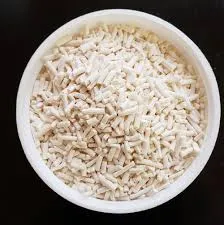
common additives
Understanding Common Additives in Foods
In the modern food industry, additives have become a ubiquitous part of food production, complementing natural ingredients to enhance the quality, shelf life, and overall appeal of products. The term additive refers to any substance that is added to food to achieve a specific purpose. Common additives include preservatives, flavor enhancers, colorings, and stabilizers. Understanding these substances can help consumers make informed choices about the foods they eat.
Preservatives
One of the most important categories of food additives is preservatives, which are used to extend the shelf life of products and to prevent spoilage. Common preservatives include sodium benzoate, potassium sorbate, and sulfites. These substances inhibit the growth of bacteria, molds, and yeast. For instance, sodium benzoate is often used in acidic foods like salad dressings and carbonated beverages. While preservatives play a vital role in food safety, some consumers are concerned about their potential health effects, believing that they can contribute to allergies and other adverse reactions.
Flavor Enhancers
Flavor enhancers are additives that intensify the existing flavor of food without introducing a new flavor. Monosodium glutamate (MSG) is one of the most common flavor enhancers and is frequently found in savory snacks, instant noodles, and processed meats. MSG works by increasing the umami flavor in foods, making them more palatable. Despite its widespread use, MSG has faced scrutiny and debate over health risks, with some individuals reporting adverse reactions. However, regulatory agencies like the FDA deem it safe when consumed in typical amounts.
Colorings
common additives

Color additives, such as artificial dyes and natural colorings, are used to improve or modify the color of food, making it more visually appealing. Common artificial colorings include Red 40, Yellow 5, and Blue 1. These synthetic dyes are often used in candy, soft drinks, and baked goods. On the other hand, natural colorings derived from fruits, vegetables, and spices are also popular, with options like beet juice and turmeric being used as healthier alternatives. Concerns about synthetic dyes have prompted some consumers to seek out products made with natural coloring agents, especially given studies linking certain artificial colorings to hyperactivity in children.
Stabilizers and Emulsifiers
Stabilizers and emulsifiers are additives that help maintain the texture and consistency of food products. Emulsifiers allow water and oil to mix, which is essential in products like mayonnaise, salad dressings, and margarine. Common emulsifiers include lecithin and mono- and diglycerides. Stabilizers, such as agar and xanthan gum, help to maintain the viscosity of products like sauces and ice creams, preventing separation. While these additives are generally considered safe, their overuse can sometimes lead to gastrointestinal issues in sensitive individuals.
Conclusion
Food additives play a crucial role in the food industry, ensuring safety, increasing shelf life, enhancing flavors, improving appearance, and maintaining texture. While many additives are recognized as safe by regulatory bodies, the rise of health-conscious consumers has led to a demand for transparency in food labeling. There is an ongoing dialogue about the potential health impacts of certain additives, emphasizing the need for consumers to educate themselves about what they are eating.
In conclusion, understanding common additives can empower consumers to make better food choices. By reading labels and being aware of the substances present in their food, individuals can take control of their diets and choose products that align with their health goals and preferences. As the food industry continues to evolve, the conversation about additives will likely persist, highlighting the balance between convenience, safety, and health.
-
What Is a Food Additive? Global Insights, Applications & Future TrendsNewsNov.24,2025
-
968 Sweetener: The Modern Solution for Health-Conscious SweeteningNewsNov.23,2025
-
Discover the Benefits and Uses of 965 Sweetener (Erythritol) | Tenger ChemicalNewsNov.23,2025
-
961 Sweetener - A Next-Gen Sugar Alternative for Health and IndustryNewsNov.23,2025
-
Understanding 960 Sweetener: The Modern Sugar Alternative for Health and IndustryNewsNov.22,2025
-
Everything You Need to Know About 955 950 Sweeteners – Benefits, Uses, and TrendsNewsNov.22,2025
-
953 Sweetener: Global Insights, Applications, and Future TrendsNewsNov.21,2025
Hebei Tenger Chemical Technology Co., Ltd. focuses on the chemical industry and is committed to the export service of chemical raw materials.
-

view more DiethanolisopropanolamineIn the ever-growing field of chemical solutions, diethanolisopropanolamine (DEIPA) stands out as a versatile and important compound. Due to its unique chemical structure and properties, DEIPA is of interest to various industries including construction, personal care, and agriculture. -

view more TriisopropanolamineTriisopropanolamine (TIPA) alkanol amine substance, is a kind of alcohol amine compound with amino and alcohol hydroxyl, and because of its molecules contains both amino and hydroxyl. -

view more Tetramethyl Thiuram DisulfideTetramethyl thiuram disulfide, also known as TMTD, is a white to light-yellow powder with a distinct sulfur-like odor. It is soluble in organic solvents such as benzene, acetone, and ethyl acetate, making it highly versatile for use in different formulations. TMTD is known for its excellent vulcanization acceleration properties, which makes it a key ingredient in the production of rubber products. Additionally, it acts as an effective fungicide and bactericide, making it valuable in agricultural applications. Its high purity and stability ensure consistent performance, making it a preferred choice for manufacturers across various industries.





